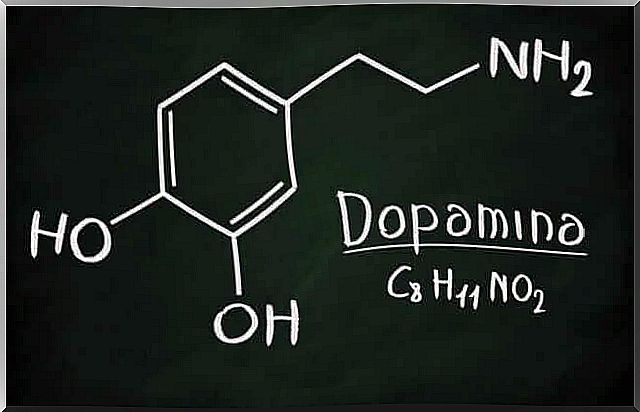Neuroleptic Malignant Syndrome: What Is It And Why Does It Occur?

The use of antipsychotics is becoming more and more widespread. They are not only used in psychotic disorders, but have also been extended to the treatment of mood or personality disorders. One of the adverse effects they can cause is neuroleptic malignant syndrome.
Although not a common complication, it is very serious and can lead to death in up to 11.6% of cases. It is a set of organic manifestations that can appear abruptly or progressively and need immediate treatment.
What is Neuroleptic Malignant Syndrome?
Neuroleptic malignant syndrome is a serious complication of antipsychotic treatment. It is an alteration in the central nervous system that can even lead to death.
The first case was described in 1960 due to the use of haloperidol. It was initially called akinetic hypertonic syndrome because these are the most striking symptoms.
It is related to agents that alter the neurotransmission of the dopaminergic system. It is usually associated with neuroleptics or antipsychotics, but it can also occur with other medications, and sometimes even with discontinuation.

It is usually more common with typical antipsychotics such as butyrophenones and phenothiazines. Newer antipsychotics, called atypicals, are associated with a lower probability of causing this syndrome. Neuroleptic malignant syndrome can occur in different situations:
- Beginning of treatment with antipsychotics. It’s the most common.
- Association of various antipsychotics.
- Increased dose of antipsychotics.
- Abrupt discontinuation of dopaminergic agents such as levodopa.
In any case, it is characterized by wide clinical variability. This often makes diagnosis difficult. However, its speed of detection is essential to avoid serious complications.
Why does it occur?
There are two theories that try to explain the cause of neuroleptic malignant syndrome:
- Changes in central dopamine neuroregulation. This would be caused by the action of antipsychotics and other drugs that act on dopamine.
- Abnormal reaction of a predisposed skeletal muscle. Neuroleptics would induce an alteration in the normal availability of calcium in the muscle cells of susceptible individuals.
The first hypothesis is the best known. Dopamine is an essential neurotransmitter and is of great importance in central nervous system pathologies. It plays a major role in regulating temperature and controlling muscle tone.
The second hypothesis would be related to malignant hyperthermia, due to its similarities with this syndrome. However, malignant hyperthermia usually occurs after anesthesia rather than with the use of neuroleptics.
Neuroleptic Malignant Syndrome Symptoms
The main feature of neuroleptic malignant syndrome is hyperthermia. This is due to the importance of dopamine in central temperature regulation. It is usually accompanied by other symptoms such as:
- Muscle hypertonia.
- Stiffness and tremors, similar to those produced in Parkinson’s disease.
- Changing the level of consciousness.
- Cardiovascular and respiratory instability.
Some common complications that can occur are:
- Bronchoaspiration.
- Pulmonary edema.
- Kidney failure.
- Infectious processes.
- Bedsore.
- Neuropsychiatric disorders.

Treatment
For the treatment of neuroleptic malignant syndrome to be effective, it must be detected early. In the face of any clinical suspicion, the first step should be the immediate discontinuation of antipsychotics. However, when the cause is abrupt discontinuation of dopaminergic agents, they should be restarted as soon as possible.
Afterwards, the treatment must be chosen individually, according to the severity of each case:
- In mild cases: water and metabolic support.
- In severe cases: pharmacological agents, electroconvulsive therapy and intensive care follow-up.
Hydration is one of the most important bases in the treatment of neuroleptic malignant syndrome, as well as hemodynamic support and the balance of the acid-base state and hypoxemia. It is also necessary to monitor the possible appearance of serious complications.
In some cases, the administration of pharmacological treatment is necessary. The most used medications are:
- Dopamine agonists. For example: bromocriptine, amantadine, apomorphine, lisuride and levodopa-carbidopa.
- Muscle relaxants such as dantrolene (also useful in malignant hyperthermia).
The first choice is usually bromocriptine. Treatment should continue for at least 10 days after the episode resolves, as it is necessary to completely eliminate the neuroleptic. Thereafter, treatment should be discontinued gradually.
In severe cases, the application of electroconvulsive therapy is recommended. It facilitates dopaminergic activity and therefore improves some of the symptoms. It is often used when the treatment is not working.
The risks and benefits of therapeutic options must always be evaluated. Thus, we can select what best suits each patient and each situation. Once the episode is over, it is necessary to avoid exposure to the offending drug.







